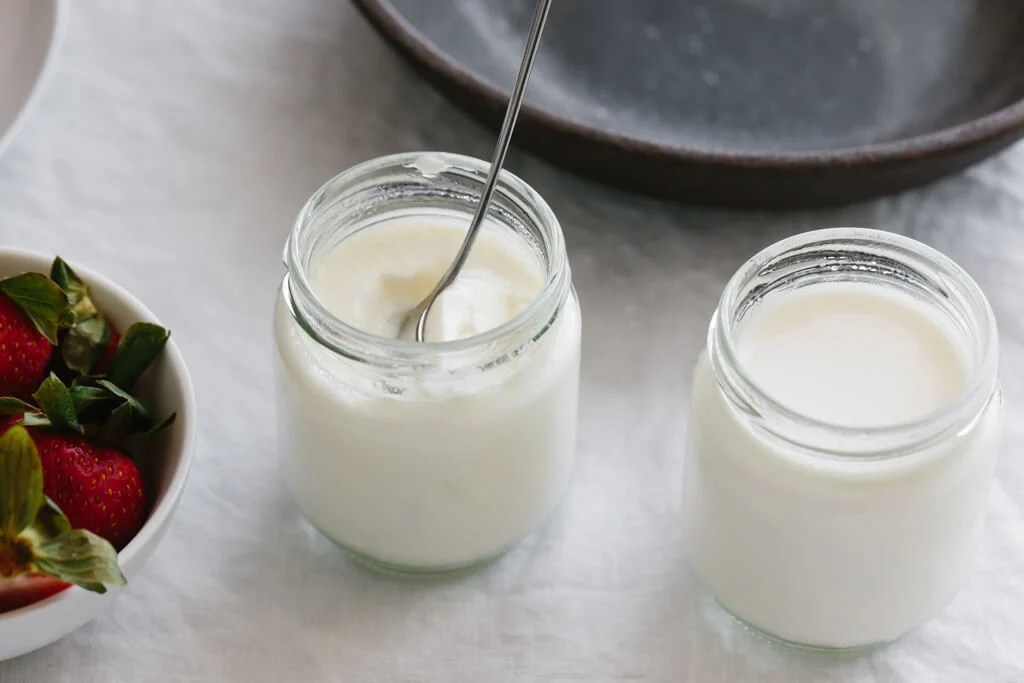Homemade Yogurt: A Step-by-Step Guide to Fresh and Flavorful Yogurt at Home
Making yogurt at home lets you control the ingredients. Store-bought yogurts often contain added sugars, preservatives, and artificial flavors. By making it yourself, you ensure that your yogurt is free from these unwanted additives. Homemade yogurt is rich in probiotics, which support digestive health by balancing the gut microbiome. You can also use organic milk and fresh fruit, enhancing the overall nutritional value.
Cost-Effectiveness
Homemade yogurt is more cost-effective than store-bought options. A gallon of milk yields about 1 quart of yogurt, which significantly reduces the per-serving cost. Store-bought yogurt costs range from $0.60 to $1.00 per serving, while homemade yogurt can bring costs down to $0.25 to $0.35 per serving. Making yogurt at home lets you save money while enjoying a superior product tailored to your taste preferences.
Essential Ingredients for Homemade Yogurt
Choosing the Right Milk
Selecting the right milk establishes the foundation for homemade yogurt. Whole milk creates a creamier texture due to its higher fat content. If you prefer a thicker yogurt, opt for whole milk. However, low-fat or skim milk also works well and results in a lighter consistency. For those with dietary restrictions, non-dairy alternatives like almond, soy, or coconut milk can be used. Ensure your chosen milk is free from additives and stabilizers that could interfere with fermentation.
Importance of Starter Cultures
Starter cultures serve as the catalyst for fermenting milk into yogurt. They contain beneficial bacteria like Lactobacillus bulgaricus and Streptococcus thermophilus necessary for fermentation. You can obtain starter cultures from a previous batch of yogurt or purchase them in powdered form. Ensure the cultures are active; inactive cultures won’t produce the desired result. Use around two to three tablespoons of yogurt or one packet of powdered culture per quart of milk for optimal results.
Step-by-step Guide to Making Easy Homemade Yogurt
Preparing Your Ingredients
Gather the essential ingredients: milk and starter culture. Choose high-quality milk—whole milk yields creamier yogurt, while low-fat options produce lighter textures. Non-dairy alternatives like almond or soy milk work too. Pour the milk into a large pot and heat to about 180°F (82°C), then cool to 110°F (43°C). If using non-dairy milk, follow specific heating instructions for your chosen type.
For the starter culture, use plain yogurt with live active cultures or a commercial yogurt starter. Ensure the starter is fresh to optimize fermentation. Mix 2-3 tablespoons of starter into a small amount of cooled milk, then blend this mixture back into the rest of the cooled milk in the pot, ensuring even distribution.
Incubation Process
Transfer the milk and starter mixture into a clean container and cover it. Maintain a steady incubation temperature of 110°F (43°C). Use a yogurt maker, an oven with the light on, or a slow cooker on a low setting. Keep the mixture undisturbed for 6-12 hours, depending on the desired consistency and tanginess.
After incubation, check the yogurt’s texture. If set, place it in the refrigerator for at least 2 hours before consuming. Refrigeration helps firm up the yogurt and enhances its flavor. Store the finished yogurt in airtight containers, and use within 1-2 weeks for optimal freshness.
Troubleshooting Common Homemade Yogurt Problems
Thin or Watery Yogurt
Thin or watery yogurt often results from low incubation temperatures or insufficient fermentation time. Ensure the incubation temperature stays between 110°F and 115°F. Use a thermometer to monitor temperature consistently. Extend fermentation by a few hours if the yogurt remains watery. Verify the freshness of your starter culture, as older cultures may lack potency. For creamy yogurt, strain it using a cheesecloth.
Preventing Off Flavors
Off flavors in yogurt can arise from improper sanitation or poor-quality milk. Always sterilize all utensils, jars, and equipment before use. Choose fresh, high-quality milk for the best taste. Avoid using flavored or ultra-pasteurized milk, as additives can affect the fermentation process. When storing yogurt, keep it at a consistent, cold temperature to prevent spoilage. A longer incubation period may also help enhance flavor if the yogurt tastes bland.
Storing and Enjoying Homemade Yogurt
Best Storage Practices
Store homemade yogurt in an airtight container. This helps preserve its freshness and maintain its flavor. Refrigerate the yogurt at temperatures below 40°F (4°C) immediately after incubation. This slows bacterial growth and extends the yogurt’s shelf life. Typically, homemade yogurt stays fresh for 1-2 weeks in the refrigerator.
Label containers with the date of preparation. This allows you to track the yogurt’s age and consume it within the optimal time frame. If the yogurt develops an off smell or mold, discard it to ensure safety.
Creative Serving Ideas
Enhance your homemade yogurt with various toppings. Fresh fruits, like berries and mango slices, add natural sweetness. Nuts and seeds, such as almonds and chia, contribute crunch and nutrients.
Incorporate yogurt into smoothies. Blend yogurt with bananas, spinach, and protein powder for a nutritious breakfast. Use yogurt as a base for dressings. Mix with herbs and olive oil for a tangy salad dressing.
Add yogurt to baked goods. Replace sour cream or buttermilk in muffins and cakes with yogurt for a moist texture. Serve yogurt alongside spicy dishes. It balances flavors in cuisines like Indian and Mexican.
Conclusion
Making your own yogurt at home is a rewarding experience that offers numerous benefits. You gain control over ingredients, save money, and enjoy a product that’s tailored to your taste and dietary needs. With the right milk and starter cultures, the process is straightforward and yields delicious results.
By following the step-by-step guide and troubleshooting tips, you can ensure your homemade yogurt is consistently thick and flavorful. Remember to maintain proper sanitation and storage practices to keep your yogurt fresh and safe to eat.
Embrace the versatility of homemade yogurt in your kitchen. Whether you enjoy it plain, with creative toppings, or as an ingredient in various dishes, homemade yogurt is a nutritious and delightful addition to your diet.





